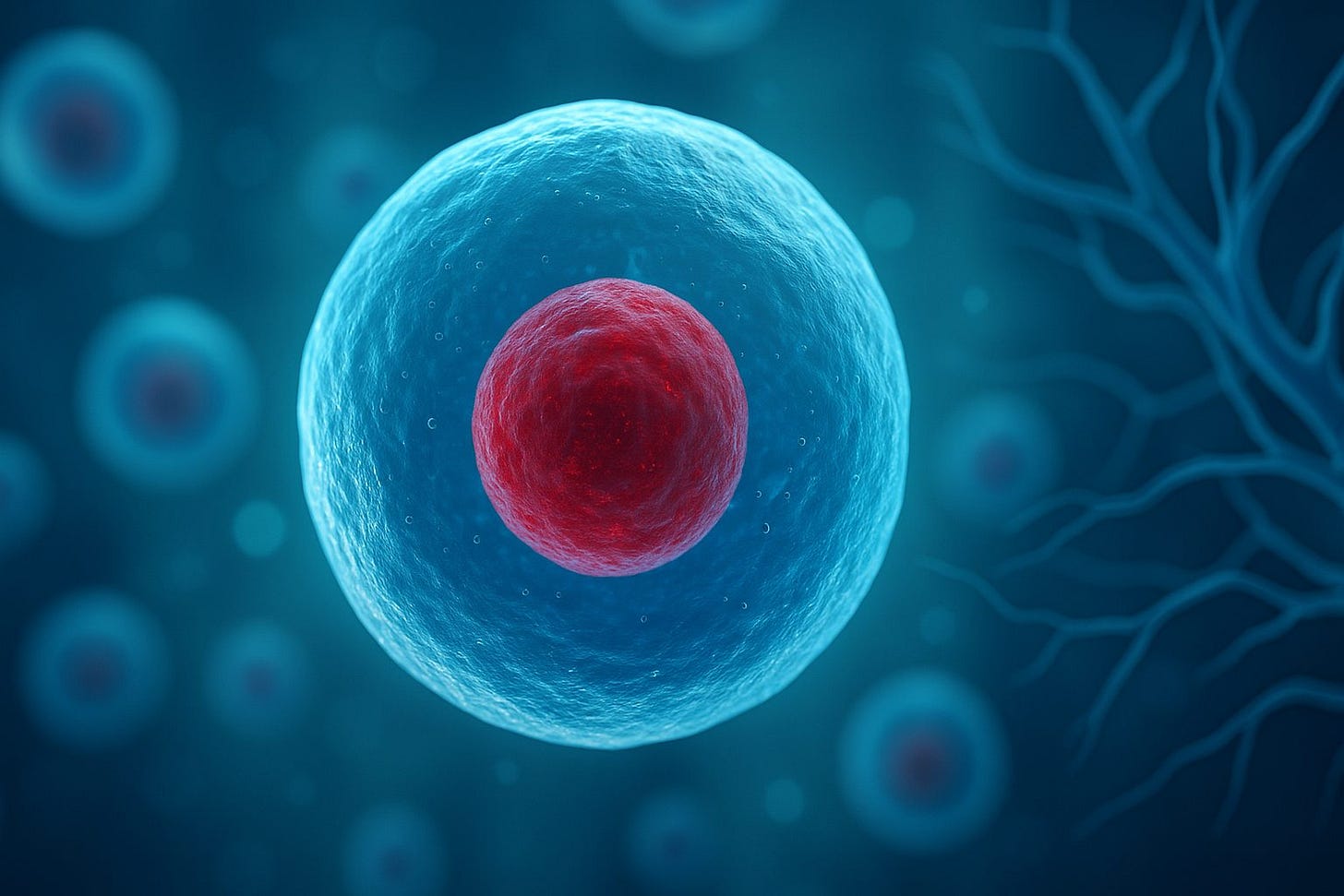Stem Cell Therapy for Longevity: What’s Real, What’s Hype, and What’s Next
Navigating the stem-cell frontier—from lab breakthroughs to eyebrow-raising claims.
In the quest for never‑ending youth, stem cells shine like a sci‑fi beacon. Are they miraculous—or just marketing gimmicks? I think the truth lies somewhere in between: dazzling science tempered by caution. Let’s peel back the hype and see what remains.
1. 🧬 What’s Scientifically Valid?
Stem cells naturally regenerate damaged tissues—our body’s built‑in repair kits. In mice, injecting "young" hematopoietic stem cells extends life by about 9% and reverses signs of aging like grip strength and immune decline. This isn’t fantasy—it’s hard data.
Human trials are now catching up. A trial treating optic‑nerve damage with cellular reprogramming (Yamanaka factors) shows early promise. Meanwhile, senolytics—drugs that clear senescent cells—are also reversing elements of cellular aging.
Plus, mesenchymal stem cells (MSCs) from bone marrow or fat juice tissues have lowered inflammation and even improved skin health in mice. They’re the Swiss army knives of cellular repair: immune modulation, tissue regeneration, you name it.
The takeaway? Lab and animal results are compelling. Early human trials show promise—but the jury’s still out on lifespan extension in us.
2. 🚨 Where the Hype (or Risk) Begins
But before you book that $17,000 Swiss stem‑cell infusion like some celebrity (yes, John Cleese does), beware:
“Stem-cell tourism”—unregulated clinics worldwide claim cures without scientific proof. Some patients wind up blind, disabled, or bankrupt.
MSC joint injections (around $16.5k per joint) show temporary symptom relief, but no definitive anti-aging effect—and FDA approval is still pending.
Immune rejection, tumor risk, and rogue growths remain key safety concerns.
In short: flashy clinics look great on Instagram. That doesn’t make them safe or effective.
3. 💡 Cutting‑Edge Science: Where It All Might Be Headed
The future is thrilling. Here’s what might actually reshape the aging narrative:
Cellular reprogramming: Injecting Yamanaka factors can reverse epigenetic age in mice and monkeys without tumors—first human trials target optic‑nerve strokes next.
Senolytics: Drugs trimming senescent cells can reduce biological age in blood samples and potentially extend healthspan.
Selective stem-cell harvesting: Isolating “young” stem cells from old tissue (own-body, own-benefit) is being studied to rejuvenate immune systems.
Organoids and gene edits: Stem-cell–derived mini‑organs and CRISPR tweaks may fix specific tissues—like retinal cells, heart muscle, even lungs.
It’s biotech at a sci‑fi scale—and much of it isn’t vaporware.
4. 🧠 Ethical, Regulatory, and Safety Checks
The power of stem cells comes with big responsibility. Ethical lines, still prickly:
Embryonic stem cells spark major debates—even with induced pluripotent stem cells (iPSCs) gaining traction.
Regulatory oversight is spotty. Some clinics operate quasi‑silently overseas; FDA warnings and Hessian bans are only catching up.
Standardization and reproducibility? Still wishy‑washy. Researchers call out shoddy methods and replication failures because of rampant hype.
We need more rigorous trials, ethical guardrails, and openness—for every government, clinic, and company.
5. 💸 What You Can Do Now (Without Breaking the Bank)
Curious—and cautious? Consider this tiered journey:
Lifestyle first: Balanced diet, exercise, regular sleep—still your best bet for longevity.
Clinical trials: Enroll in established stem-cell trials (like optic-nerve or MSC studies).
Bank your own cells: “Bioinsurance”—cryobanking your adult stem cells—is legal and relatively safe.
Avoid sketchy clinics: If it sounds unbeatable, overpriced, or promises immortality—it probably is.
🔚 Final Thoughts & What Might Be Next
Stem cell tech isn’t snake oil. It’s an evolving, powerful tool that—used responsibly—could dramatically enhance healthspan and maybe lifespan. But we’re not yet in a world where youth is injectable.
What should you do? Stay curious. Follow reputable research. Try the FDA‑approved or ethically sound stuff. And avoid easy “miracles” that smell of snake oil.
Call to Action
Curious about clinical trials? Look up registered stem‑cell studies on ClinicalTrials.gov.
Banking your stem cells? Ask your doctor about adult‑stem‑cell cryobanking.
Still unsure? Share your questions in the comments below—and I might cover them next! 😉
Engagement time—tell me: if you could rejuvenate just one organ, which would it be?


